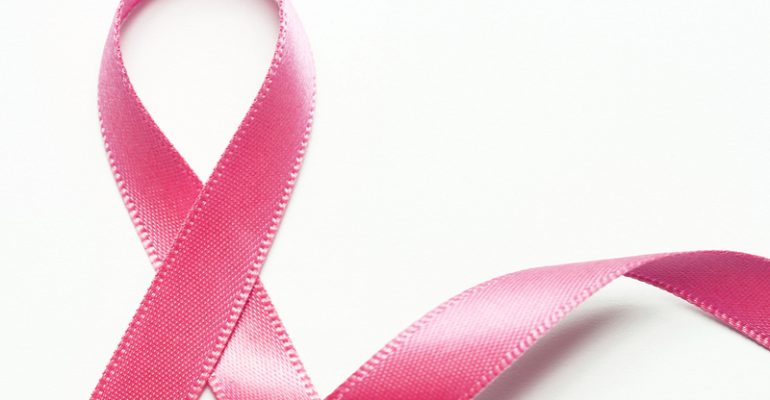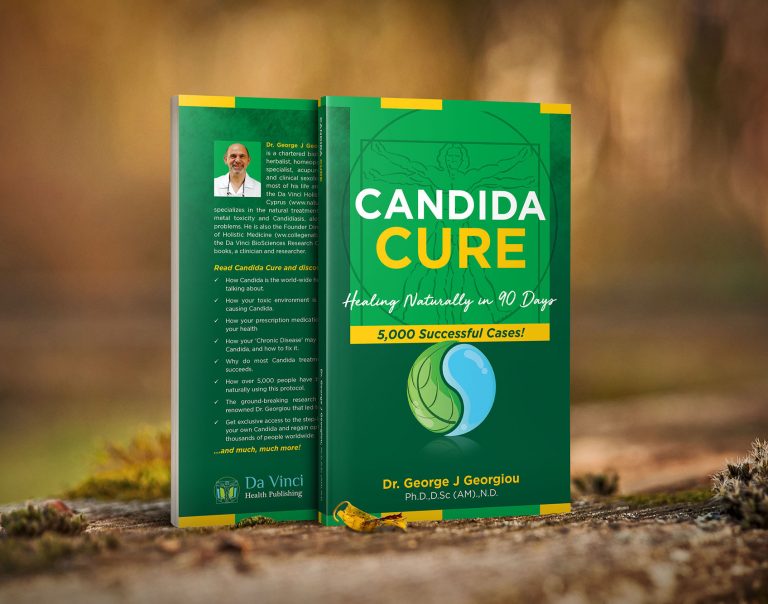NON-DRUG SUPPORT FOR BREAST AND PROSTATE CANCERS
19/10/2016 2016-10-19 12:55NON-DRUG SUPPORT FOR BREAST AND PROSTATE CANCERS

NON-DRUG SUPPORT FOR BREAST AND PROSTATE CANCERS
An Interview with Shari Lieberman, PhD, CNS, FACN
by Jim English
Last month, in Part I of our interview with noted researcher, scientist and author, Shari Lieberman, Ph.D., CNS, FACN, we discussed her new Auto Immune Formula, which is designed to support, modulate and enhance healthy immune function. In Part II we continue our interview with Dr. Lieberman, discussing the development of two new cancer-support formulas, BCF (Breast Care Formula) and PCF (Prostate Care Formula).
VRP: Thank you for meeting with us again, Dr. Lieberman. Last month we were discussing your Auto Immune Formula, but you have also recently introduced BCF (Breast Care Formula) and PCF (Prostate Care Formula). Can you describe these formulas and how they work?
Dr. Lieberman: While the Auto Immune Formula was designed to support, stimulate and enhance healthy immune function, my aim in designing the Breast and Prostate Care Formulas was to address the needs of people either diagnosed with, or concerned about cancers of the breast or prostate. While these are, obviously, different diseases, they share important similarities that research shows can benefit from factors common to both formulas.
Specifically, I wanted to address a common problem encountered by cancer patients. Many cancer patients spend a great deal of time seeking out and researching the medical literature relating to their diseases. Ultimately they come across the large body of published research and clinical data that reveals how antioxidants and other natural compounds can either directly support recovery from their disease, or protect them from the terrible side effects of conventional anticancer therapies. And once they discover this information, it is only natural that they want to incorporate these compounds with their therapy.
Now the problem is that when a patient tells their oncologists that they want to start taking antioxidants to help them deal with the side effects of chemotherapy and radiation therapy, their oncologist usually objects. By training, cancer specialists will not allow their patients to use any compound that they’re not familiar with, and this leaves the patients in a quandary.
To get around this problem I decided to work with an oncologist who was versed in the medical research on natural therapies. Specifically I was looking for a cancer specialist who could not only verify the benefits of these compounds based on peer-reviewed studies, but ideally someone who was experienced in the use of these natural agents in their own clinical practice.
VRP: So you were looking for an oncologist who was familiar with the research and who also had clinical experience in using these ingredients to help patients with cancer. Was it your hope that in this way you would be able to help the patient to overcome the objections of traditional oncologists?
Dr. Lieberman: Exactly. If these formulas were going to be of value I really wanted to overcome the most common objections by getting input from an oncologist who had experience in using this approach, someone who could verify the safety and effectiveness of these compounds for treating cancer.
VRP: And eventually you collaborated with Dr. Douwes?
Dr. Lieberman: Yes. Friedrich Douwes, MD, is a noted oncologist and the Executive Medical Director of the St. George Hospital Cancer Treatment Center in Bad Aibling, Germany. I had visited his clinic several times and was aware of his tremendous experience in using these compounds with many patients. I knew that Dr. Douwes was very familiar with using natural therapies along with conventional treatments, and that he had reviewed the literature and clinical data on alternative therapies. When we sat down to begin working on these formulas we outlined four guiding principals.
First, each ingredient had to be backed by published research. Second, the mechanism of a given compound’s actions had be understood. Third, the ingredients had to be completely non-toxic. And fourth, we would only include ingredients that would not interfere in any way with conventional anticancer therapies.
We set out to review the ingredients that we knew were helpful in cancer. Some of the ingredients were proven to help patients by protecting healthy cells while making chemotherapeutic drugs more selective for cancer. Other ingredients were shown to help by making chemotherapy in and of itself more effective.
VRP: So working together you were able to develop formulas that you knew could be used safely and effectively by cancer patients. So what happens when a patient goes to their oncologist and tells them they are using these formulas?
Dr. Lieberman: Our hope is that the patients won’t find themselves locking horns with their oncologists. The point of these formulas is that they have no downside. They were designed to be used alone, or concomitantly, along with all of the current anticancer therapies.
This is the main reason I felt it was imperative to develop these formulas with an experienced and highly regarded oncologist. Dr. Douwes is one of the few oncologists I’ve ever met who really knows about all of these natural compounds. And Dr. Douwes has been using natural compounds for over two decades. In my experience that is extremely rare for an oncologist. I have many colleagues doing anticancer therapy, but very few of them are oncologists.
VRP: Is that why both formulas contain nutrients, such as Coenzyme Q10 or Selenium?
Dr. Lieberman: Yes, exactly. In the case of selenium, epidemiological studies have consistently shown that low serum levels of selenium are directly linked to an increased risk of developing prostate cancer. In fact, selenium has been shown to block the growth cycle of cell reproduction and induce apoptosis (programmed cell death) in prostate cancer cells. And in women, selenium has been shown to inhibit VEGF (vascular endothelial growth factor) in breast cancer cells. Research also shows that selenium reduces the incidence of malignant cells in animal models, and enhances the effects of chemotherapeutic drugs, such as Taxol® and adriamycin.
In the case of Coenzyme Q10, cancer patients are often very seriously deficient in this nutrient. CoQ10 is an antioxidant that protects against numerous reactive oxygen species (ROS) that are involved in cancers, particularly breast cancer. Most impressively, researchers have reported cases of induced remission in late stage breast cancer patients taking CoQ10, and published reports indicate that it may also be therapeutic for patients with prostate cancer.
VRP: Quercetin, like Selenium and CoQ10 is another powerful antioxidant. Is that why you have quercetin in both formulas, or is it there for another purpose?
Dr. Lieberman: Well, the list of anti-cancer properties of quercetin is really impressive. First, quercetin is a plant phytochemical similar to, and in some ways, more powerful than vitamin C. And like vitamin C, quercetin works by multiple mechanisms to prevent and fight cancers.
First, quercetin is a potent aromatase inhibitor that prevents the conversion of DHEA and testosterone to estrogen, which is well established for its role in promoting both breast and prostate cancers. But that’s just the beginning. Quercetin also prevents cancer by inhibiting estrone sulfatase in the liver, stimulating the immune response, and by triggering cancer cell apoptosis. It also helps by inactivating potentially carcinogenic liver enzymes while inhibiting the proliferation of cancer metastases.
And in a recent paper, researchers found that quercetin inhibits the cancer-causing effects of hydrogen peroxide. Cells must communicate with each other to stay healthy and to promote normal cell growth. Hydrogen peroxide is a known tumor promoter that works, in part, by inhibiting normal cell communication. What researchers discovered from animal studies is that quercetin works to inhibit this tumor-promoting property of hydrogen peroxide. The research, just published at the beginning of the year, may help to explain why cancer rates are often lower in people who eat foods high in phytochemicals and vitamin C.
And if all of this weren’t enough, quercetin also works synergistically with numerous drugs used in the treatment of cancer, including ribavarin, adriamycin and tamoxifen.
VRP: Very impressive. Now, lycopene has been well researched as an anti-cancer nutrient, particularly for preventing prostate cancer, yet I see that you have it in both the Breast and Prostate cancer formulas. Why is that?
Dr. Lieberman: To begin with, lycopene is the most potent carotenoid inhibitor of breast and prostate cancer progression. Research has shown that lycopene interferes with insulin-like growth factors (IGF) that are potent promoters of breast and prostate cancer. By interfering with these growth factors lycopene may reduce both the occurrence and the progression of breast and prostate cancers.
For example, recent epidemiological studies show that lycopene reduces the risk of prostate cancer. And additional research suggests that lycopene may also decrease the growth and spread of prostate cancers. In a Phase II study of men undergoing radical prostatectomy (removal of prostate), 73 percent of men given supplemental lycopene before surgery showed no spread of the cancer beyond the prostate. And in the group of controls-men not receiving supplemental lycopene-these numbers were almost reversed, and in 82 percent of the men their cancer had spread.
Additionally, plasma prostate-specific antigen (PSA) levels dropped 18% in the lycopene group, while increasing 14% in control group. These results suggest another mechanism by which lycopene decreases growth of prostate cancers.
VRP: Two items caught my eye when going over the ingredients list – Lactobacillus sporogenes and Convolvulus arvensis. What can you tell me about these ingredients?
Dr. Lieberman: Well, besides the strange names, both of these ingredients are powerful anti-cancer nutrients. Lactobacillus sporogenes is-as the name implies-a naturally occurring bacteria that supports a healthy intestinal environment by re-establishing the ‘good’ flora in the gastrointestinal tract and preventing the overgrowth of pathogenic bacteria. And we know that people who consume yogurt with a good source of lactobacillus bacteria have a lower risk of developing breast cancer. Additionally, lactobacillus has been shown to reduce the reabsorption of estrogens, and it has an antiproliferative effect on cancer cells.
The second ingredient you mentioned, Convolvulus arvensis extract, is the source of a group of proteoglycan molecules that have been shown to inhibit angiogenesis, the process used by tumors to promote the growth of new blood vessels that are necessary for tumor growth. In animal models Convolvulus arvensis extracts have been shown to halt tumor growth, and in higher concentrations cause a significant reduction in tumor size. In some animal models the extract completely eradicated the tumors. Human studies are currently underway.
VRP: Let’s move on to something more people may be familiar with – mushrooms. The last ingredient common to both formulas is an extract from the Maitake mushroom. What can you tell us about this extract?
Dr. Lieberman: Breast and prostate cancers benefit from Maitake D-Fraction, which has been shown to activate the immune system to kill cancer cells without harming healthy ones. Maitake activates cytotoxic T-cells that mark cancer cells for destruction, as well as the NK (Natural Killer) cells that actively seek out and destroy tumor cells. Maitake D-Fraction also increases the production of interleukin-1 and induces apoptosis of cancer cells.
Another important property of Maitake is that, if given concomitantly with either chemotherapy or radiation therapy, it enhances the effectiveness of these treatments while also reducing their unpleasant side effects. And it does this without reducing or hampering the effectiveness of either therapy.
Breast Care Formula
VRP: We’ve covered ingredients in both formulas. Let’s begin with the Breast Cancer Formula, which contains the medicinal mushroom, Shiitake.
Dr. Lieberman: Shiitake is a Chinese herb that is used in Japan as a powerful anti-cancer treatment. In addition to stimulating and enhancing the responsiveness of the immune system, shiitake has also been found to shrink tumors and prevent the spread of cancers. Shiitake is also synergistic with other chemotherapeutic drugs and has been found to prevent the recurrence of breast cancer after surgery. Shiitake has been shown to significantly prolong the lifespan of patients with breast and other cancers.
Another compound included in the Breast Cancer Formula is D-limonene. This unique compound contains an active ingredient known as perillyl alcohol that inhibits the growth and cell cycle progression of breast cancer cells.
VRP: You’ve also included DIM (diindolylmethane) which has been in several previous newsletter articles, primarily for its estrogen balancing and anticancer properties.
Dr. Lieberman: Yes, indole-3-carbinol (I3C) has been shown in both Phase 1 and Phase 2 human studies to be effective in inhibiting breast cancer growth in both estrogen positive and negative breast cancer cells. DIM is the active plant compound in I3C. DIM is also synergistic with chemotherapeutic agents such as tamoxifen. As a preventive supplement, DIM has been shown to lower breast cancer risks by reducing levels of 16-alpha-hydroxyestrone (a biological marker for breast cancer risk) while improving the ratio of 16-alpha-hydroxyestrone to 2-hydroxyestrone. By improving this ratio, DIM is effectively lowering the amount of ‘bad estrogen’ relative to the ‘good estrogen.’ Additionally, DIM modifies cytochrome p450 enzyme activity to support detoxification of carcinogens, induces apoptosis of breast cancer cells, and may stimulate progesterone production.
VRP: BCF also contains a good dose of Green Tea extract.
Dr. Lieberman: Yes, I’ve included Green Tea and Grape Seed extracts, both very powerful antioxidants that help to induce cell death in breast cancer cells. Additionally, Green Tea contains the active ingredient, epigallocatechin gallate, that has been shown in human studies to inhibit human breast cancer cell proliferation, reduce tumor invasion and metastasis, and prevent recurrence of breast cancer in early stage cases (stage I and II).
Prostate Care Formula
VRP: Moving on to the Prostate Care Formula, I see you’ve included several ingredients proven to help prevent prostate cancer.
Dr. Lieberman: Yes, all of these are well-established for their effects. Zinc, for example has been shown to inhibit prostate tumor cell invasion and metastasis while inducing apoptosis in prostate cancer cells.
I’ve also included Beta-sitosterol, which inhibits growth of prostate cancer, decreases cancer cell number and induces apoptosis. Animal studies support the use of beta-sitosterol in inhibiting prostate cancer growth, and epidemiological studies suggest beta-sitosterol is preventive for prostate cancer.
VRP: You also have Pygeum, also known for supporting prostate health.
Dr. Lieberman: Yes, Pygeum africanum is very effective for the treatment of benign prostatic hyperplasia, working by reducing prostate cell proliferation and inhibiting growth factors that are responsible for prostate overgrowth. And Saw Palmetto works well with Pygeum, since it is also effective for the treatment of human benign prostatic hyperplasia. Saw palmetto also induces apoptosis and necrosis in human prostate cancer cells, while inhibiting cancer cell invasion (metastases).
VRP: The last ingredient here is Stinging Nettle. Comment?
Dr. Lieberman: I’ve included Stinging nettle, which is very effective for the treatment of human benign prostatic hyperplasia. Stinging nettle works by reducing prostatic cell proliferation and inhibiting growth factors responsible for prostate overgrowth. And Stinging nettle acts synergistically when combined with Pygeum africanum.
VRP: Thank you for taking the time to discuss your work with us, and for sharing these sophisticated nutritional formulas that are long overdue in the fight against cancer.
Dr. Lieberman: Thank you, it has been my pleasure.




